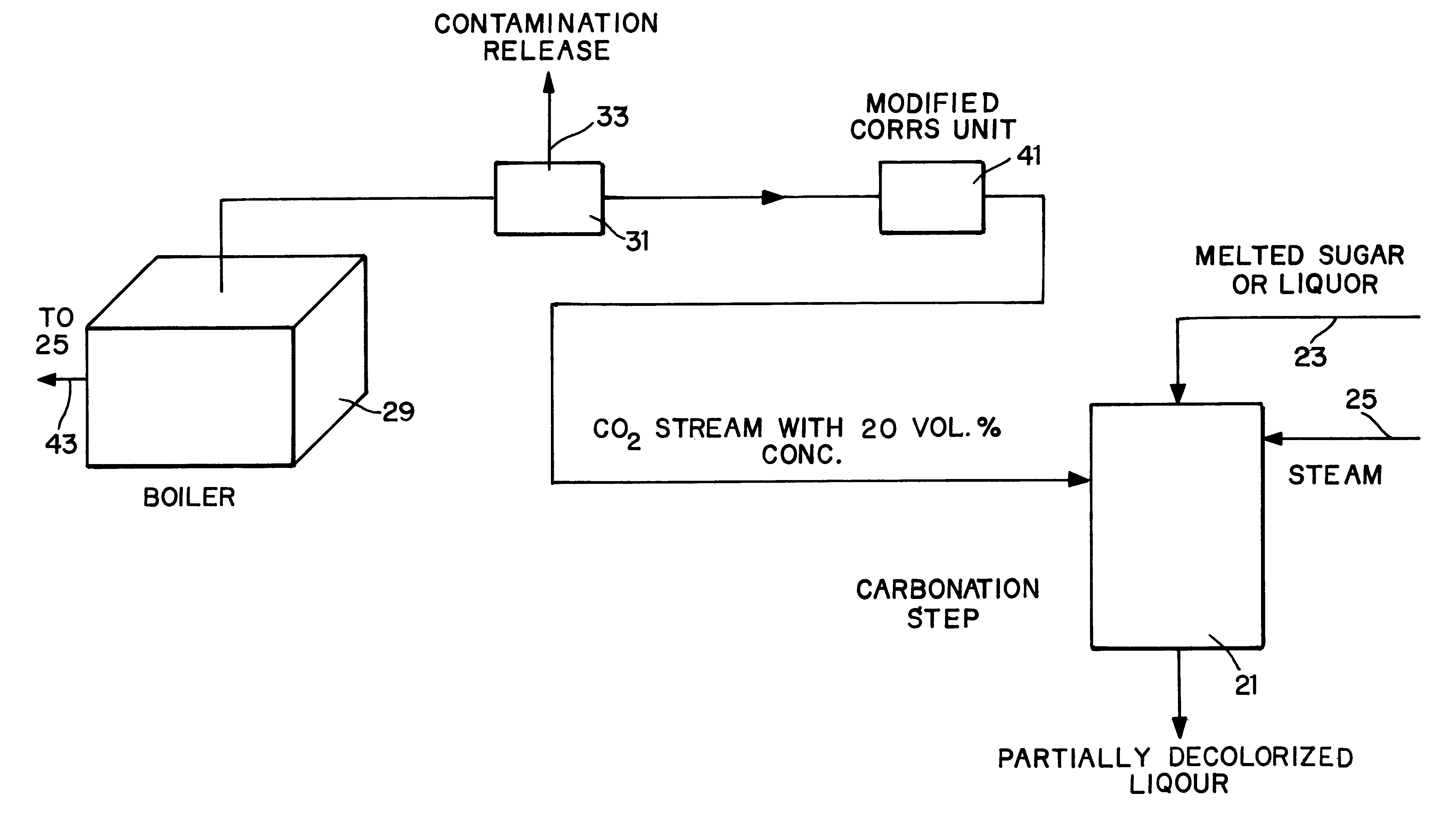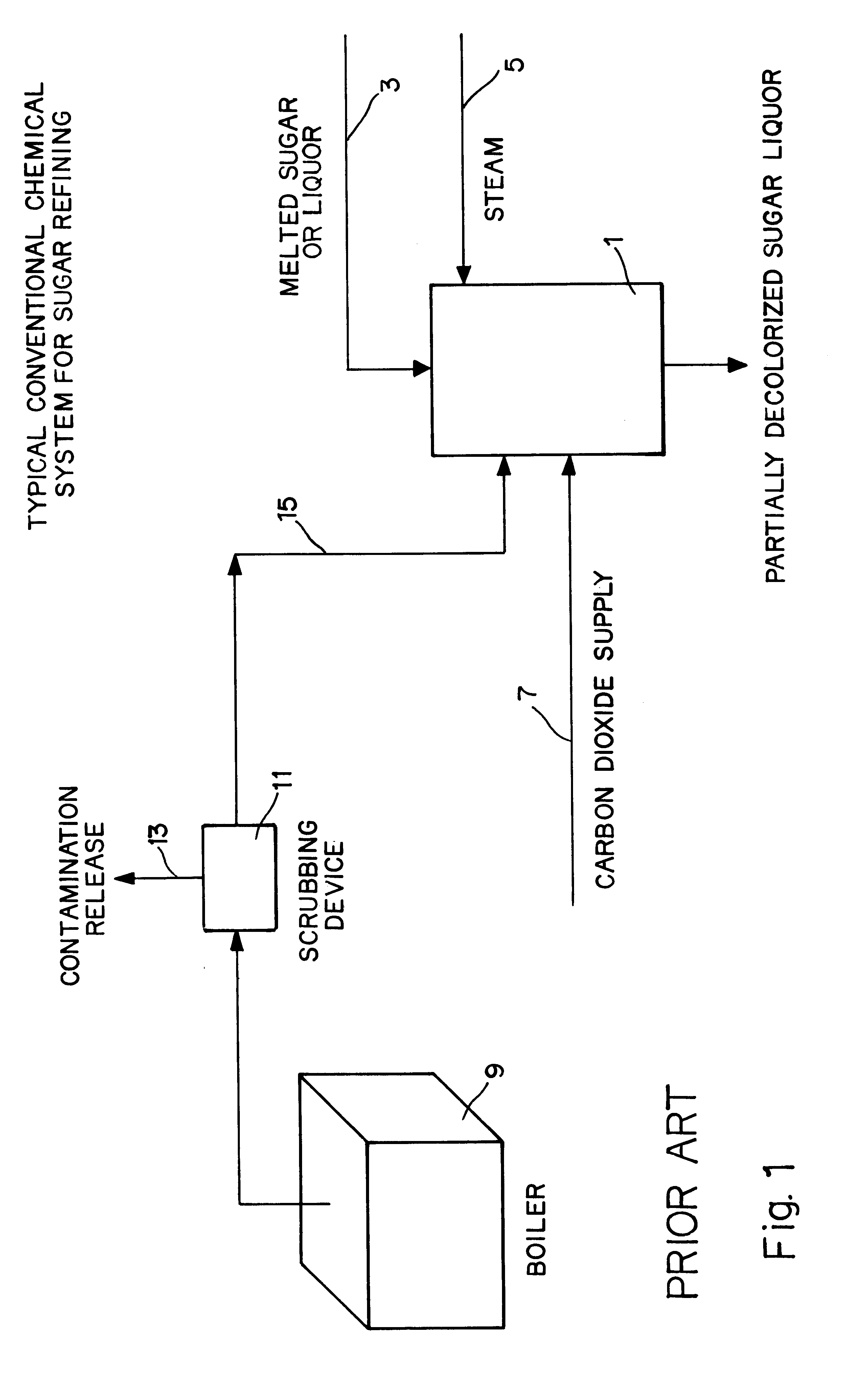System and method for refining sugar
a technology of sugar refining and system, applied in the field of sugar refining, can solve the problems of reducing the supply of carbon dioxide, reducing the efficiency of sugar refining process, and correspondingly limited plant operation, so as to improve the efficiency and throughput improve the efficiency and improve the effect of sugar refining process
- Summary
- Abstract
- Description
- Claims
- Application Information
AI Technical Summary
Benefits of technology
Problems solved by technology
Method used
Image
Examples
Embodiment Construction
FIG. 1 shows a typical sugar refining system of the prior art. This figure does not purport to depict all of the steps in a sugar refining process; the present invention is concerned only with the carbonation step, described above.
The carbonation process takes place in reactor 1. Melted sugar, also known in the art as liquor, enters the reactor through line 3. This is the unrefined sugar which has a light brown color. Steam is injected into the reactor through line 5. Carbonation is accomplished with carbon dioxide which is derived primarily from the exhaust gas of boiler 9. The boiler is used to heat water to provide the steam which enters the reactor in line 5, thereby heating the contents of the reactor.
The exhaust gas is purified in scrubber 11, which removes particulates and other impurities, as symbolized by arrow 13. If the fuel used by the boiler is natural gas, the output of the scrubber comprises a stream having about 6-9% carbon dioxide, by volume. This stream is carried ...
PUM
| Property | Measurement | Unit |
|---|---|---|
| Percent by volume | aaaaa | aaaaa |
| Percent by volume | aaaaa | aaaaa |
| Concentration | aaaaa | aaaaa |
Abstract
Description
Claims
Application Information
 Login to View More
Login to View More - R&D
- Intellectual Property
- Life Sciences
- Materials
- Tech Scout
- Unparalleled Data Quality
- Higher Quality Content
- 60% Fewer Hallucinations
Browse by: Latest US Patents, China's latest patents, Technical Efficacy Thesaurus, Application Domain, Technology Topic, Popular Technical Reports.
© 2025 PatSnap. All rights reserved.Legal|Privacy policy|Modern Slavery Act Transparency Statement|Sitemap|About US| Contact US: help@patsnap.com



